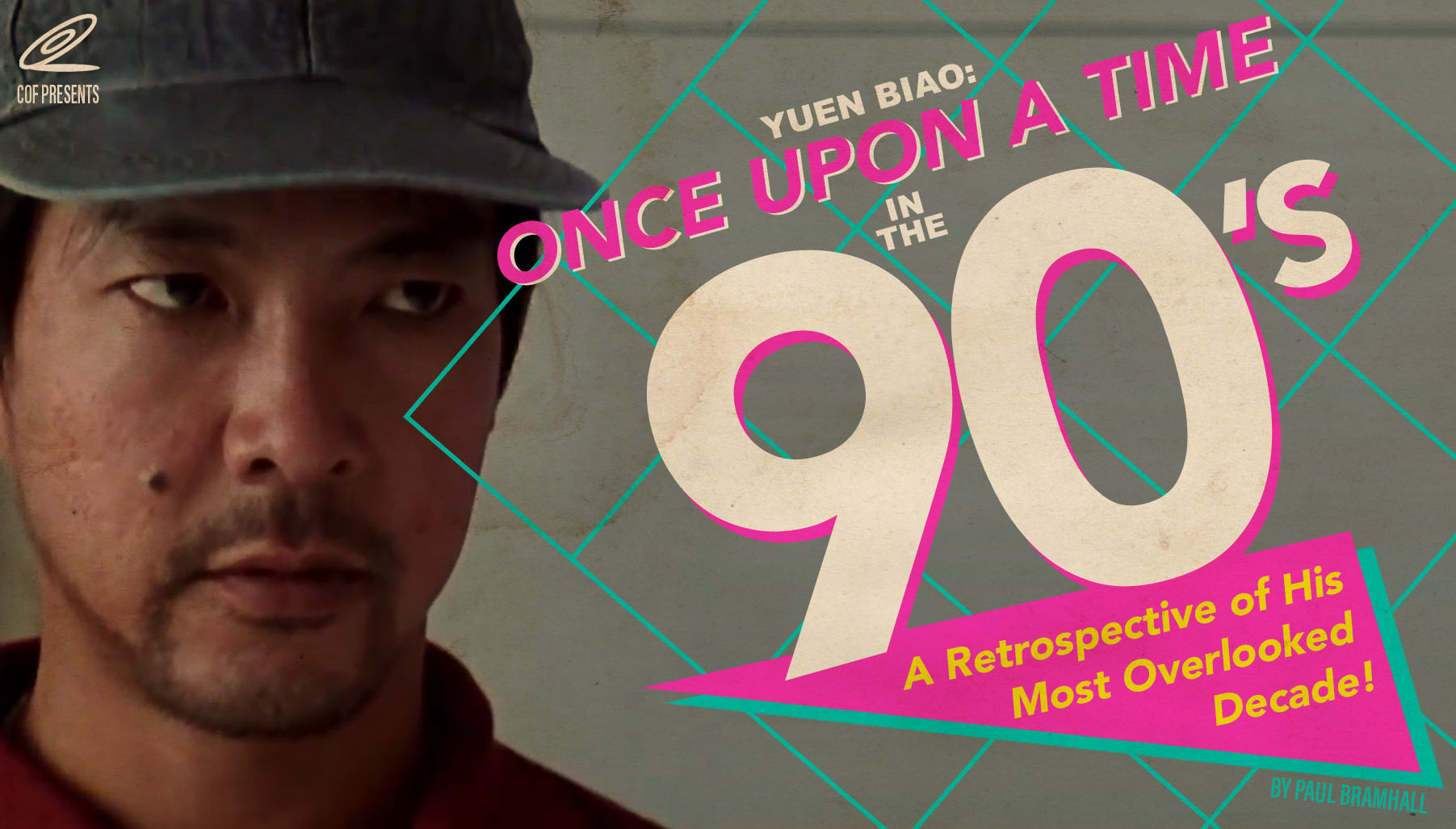
There would be few out there who’d argue that, in the world of kung fu cinema, the names of Jackie Chan, Sammo Hung, and Yuen Biao will forever be imprinted. Collectively known as the Three Dragons, between them the trio have headlined some of the defining movies of the genre, and even more when you count their experience behind the camera. Having studied at the same Peking Opera school under the tutelage of Yu Jim-Yuen, it was during the 1980’s that their popularity sky-rocketed, and throughout the decade they’d appear on the big screen together a total of 6 times. It was Project A, Meals on Wheels, and Dragons Forever that became the defining moments of their shared outings (with the other 3 being entries in Sammo Hung’s Lucky Stars comedy franchise), with the latter continuing to be the final time they shared the screen as of the time of writing.
Part of this was down to a well-documented underlying tension during the filming of Dragons Forever. By this point Jackie Chan and Sammo Hung had both become goliaths in the world of Hong Kong action cinema, and the mutual collaboration of their earlier productions had here turned into something more like a professional rivalry (which was ironically a win for the audience, as their respective stunt teams attempted to outdo each other in the fall heavy finale!). As a result Yuen Biao, the youngest and most passive of the trio, often feels like he’s side-lined in the final product, a feeling which was echoed by his own opinions towards the production.
By the time the 90’s rolled around Jackie and Sammo’s careers followed the expected paths. Jackie began to aggressively target the U.S. market, first with limited success thanks to 1995’s Rumble in the Bronx, and then striking box office gold with 1998’s Rush Hour, kicking off a string of Hollywood starring vehicles. Comparatively Sammo had a tumultuous decade due to the highly publicised divorce of his first wife, starring in a string of hard-hitting contemporary actioners (often with questionable humor), before he also headed stateside in 1998 to headline the TV show Martial Law. Yuen Biao on the other hand seemed to become a little lost in the 1990’s, perhaps missing the close collaboration of his Peking Opera brothers combined with shifting audiences tastes, his filmography for the decade is a curious mix of genres and oddities which saw him work in a number of countries.
Many seem to write the 90’s off when it comes to discussing Biao’s best work, painting the decade with a broad brushstroke of low budget actioners, and some even saying he was past his physical prime. Considering Biao was still the spritely age of 33 in 1990, an age when Jackie Chan was directing and starring in Project A II, and Sammo Hung was similarly directing and starring in My Lucky Stars, such observations seem unjustly harsh. Sure nobody was expecting him to be a human rubber band like he was in his late 70’s work like Knockabout, but his kung fu brothers had already proven that a Hong Kong action stars expiry date doesn’t finish at 30. So were the 90’s really as bad to Biao as the decade’s reputation would have us believe, or is it just a misunderstood era in the youngest dragons filmography? In this feature, we’ll delve into the most overlooked decade of Biao’s career in a quest to find out.
In 1990 we got a triple dose of Biao, clocking in what would be his busiest year of the decade. The year can almost be taken as a microcosm of the decade as a whole – some trash, some gold. Let’s start with the trash. Similar to Jackie Chan, possibly even more so, Biao had built up a hugely popular fanbase in Japan. I mean this guy even released an album there during the 80’s. Biao had already started to capitalise on his Japanese fanbase with the 1989 Hong Kong-Japanese co-production The Peacock King, which saw him starring alongside the likes of Mikami Hiroshi, Yasuda Narumi, and Hidari Tompei. Featuring Biao paired up with a Japanese monk, together they have to battle against manga style monsters in order to stop The Gates of Hell from opening, and the result proved to be a hit at the Japanese box office. A sequel was rushed into production, and in 1990 it hit the screens in the form of Saga of the Phoenix.
While The Peacock King was a fun fantasy with entertaining effects work, the sequel is a miserable disaster on almost every level. Not that it can really be blamed on Biao – he spends almost the entire movie frozen in a block of ice, only really showing up to do anything significant in the finale, however his appearance was enough to be used as the star in the promotional material. Even Mikami Hiroshi who played the monk in the original had enough sense not to return for the sequel, so instead his character is replaced by Abe Hiroshi in an early role, who thankfully would go onto do much better things later in his career. Unbelievably the sequel also features Zatoichi himself, Shintaro Katsu. Awful in every sense of the word, if there’s a movie to avoid in Biao’s entire filmography, then it’s Saga of the Phoenix.
Thankfully he bounced back almost immediately thanks to re-teaming with Sammo Hung in Teddy Kwan’s Shanghai Shanghai. This would be the first time for him to share the screen with his big brother since 1988’s Dragons Forever, and you can feel the difference in energy emanating off the screen when compared to that movie I choose to no longer mention. Other Seven Little Fortunes alumni are also onboard, with Corey Yuen on choreography duty (having worked with Biao on the previous decades Righting Wrongs and Eastern Condors) and Yuen Tak in a small supporting role. Here Biao’s role plays to his strengths, a humble country bumpkin who comes to the big city, and his resulting run-ins with a triad gang led by Sammo Hung leads to a satisfying final fight between the pair.
It’s good enough to forgive Kwan’s messy narrative during the rest of the movie that often feels like it’s not sure what it’s supposed to be, however Biao anchors proceedings well, and is surrounded by legends like Anita Mui for him to play off. Shanghai Shanghai’s selling point will always be the Biao vs Sammo fight though, going at it for the first time since their brief scuffle 4 years earlier in Millionaire’s Express. While in that one their fight was a misunderstanding, here they go at each other as full-fledged enemies, and it’s a suitably high impact throwdown with Biao looking dapper in a tailored suit. The pair would meet again on screen throughout the years, including a locker room scuffle the next time they’d reunite in 1995’s Don’t Give a Damn (which we’ll get to), but nothing would match the quality of their fight in Shanghai Shanghai.
Rounding out 1990 is my personal favorite Biao flick of the 90’s – License to Steal. Similar to She Shoots Straight which hit HK cinemas a few months earlier, here once more Sammo is on producer duty for what’s actually a starring vehicle for his new flame Joyce Godenzi. However it’s arguably Biao that steals the show whenever he’s onscreen. If he felt his mentally unbalanced character from Dragons Forever got short thrift, then here director Billy Chan lets him loose as an overly zealous fan of chivalrous swordsmen from old wuxia novels, believing himself to be a modern-day incarnation of one. While he may not be on screen the whole time, whenever he is it’s a joy to watch, and he gets a worthy final fight against Billy Chow, making Biao the last of the Three Dragons to go up against the Canada born kickboxer.
It was in 1991 that Biao’s feelings of being side-lined reared their head once more. Signing up for Tsui Hark’s Once Upon a Time in China as Wong Fei Hung’s (being played by Jet Li) righthand man, it’s rumoured that Biao believed his role to be a much bigger one than what ended up onscreen. It makes sense when viewing his performance, as despite his limited screentime, whenever he is onscreen there’s a distinct feeling we’re watching someone who thinks they should be the star of the show. Instead, it became Jet Li’s defining role and led to a resurgence in the kung fu movie with local audiences. More credence is given to the theory when we consider the fact that Biao never returned for any of the subsequent sequels, his character replaced by a more comedy inclined Max Mok, and 2 years later Biao would produce his own take on the Wong Fei Hung universe with Kickboxer (we’ll get to that later as well).

Jet Li, Kent Cheng, Jacky Cheung, Rosamund Kwan, Shi-Kwan Yen, Yuen Biao, and Kam-Fai Yuen in Once Upon a Time in China.
Perhaps feeling burnt by his experience on Once Upon a Time in China, a year later Biao decided to take matters into his own hands. The result was A Kid from Tibet. Biao starred, he produced, he directs, and he even set up his own production company (Yuen Biao Productions Ltd.) which didn’t produce anything outside of this one movie. Compared to his Peking Opera brothers Biao was decidedly late to the directing game, with Sammo Hung first directing himself in 1977’s The Iron Fisted Monk, and Jackie Chan doing the same with 1979’s The Fearless Hyena. Unlike Jackie and Sammo who’d go on to have successful directing careers (Sammo in particular, with Jackie limited to always directing himself), A Kid from Tibet would be Biao’s first and last time directing, and watching the strangely paced and tonally inconsistent end product it’s easy to understand why.
All of the ingredients are there for a good movie – Tibetan locations, enlisting go-to villain Yuen Wah who Biao had memorable matchups with in the previous decades Eastern Condors and The Iceman Cometh, and we even get a brief cameo from Jackie Chan. However Biao can’t quite recreate the fish out of water magic that worked so well for him in movies like The Iceman Cometh and Shanghai Shanghai, most likely a result of his own directorial limitations. Once his monk arrives in Hong Kong the pacing drags as he bickers with a local contact played by Michelle Reis, and there’s just enough time between action scenes for boredom to set in, a feeling that becomes more difficult to snap out of the longer A Kid from Tibet drags on. Things are redeemed slightly by the obligatory final fight between Biao and Wah, performed with entertainingly oversized swords, but it’s not enough to make Biao’s directorial debut a recommendation.
1992 proved to be a year full of surprises for Biao though, and one of the biggest ones came with the release of Ronny Yu’s Shogun and Little Kitchen. Made just a year before his seminal The Bride with White Hair, Yu was only the second director (after Alfred Cheung with 1988’s On the Run – arguably Biao’s best movie of his entire filmography) to cast Biao in a non-fighting role. Similar to how Biao incorporated his athleticism into the sport of soccer in 1983’s The Champions, here he gets to show off his acrobatics as the chef of a restaurant run by Ng Man-Tat. A feel-good Lunar New Year flick, look out for minor supporting roles from Jimmy Wang Yu and Leung Kar-Yan. Interestingly Shogun and Little Kitchen predates both Stephen Chow’s God of Cookery and Jackie Chan’s Mr. Nice Guy, offering up an opportunity to see Biao in a different kind of culinary role, and one that he looks to be enjoying.
As much as I could create a whole argument around how if there was no Yuen Biao, there would be no God of Cookery or Shaolin Soccer, we’ll move on. Biao also banked on his Japanese connection again during the same year, being cast as an opium dealing mob boss in Setting Sun, a multi-national co-production made during the Nikkatsu studios 80th anniversary. While the thought of Yuen Biao appearing in a movie that stars Diana Lane and Donald Sutherland was an unlikely one at the time, and still feels hard to believe even today, for fans of Asian cinema the fact that he’s in a movie which also features Jo Shishido will trump both of the Hollywood stars any day of the week. Taking Saga of the Phoenix (damn, I mentioned it) into consideration and Shintaro Katsu’s role in that one, Biao is one of the few HK action stars who can say he’s played alongside such legends of Japanese cinema.
But back to Setting Sun, as entertaining as it is to see Biao in a villain role, and something I would have loved to see more of, the movie itself is a sprawling 150+ minute mess, which no amount of gorgeous set design and sweeping cinematography can compensate for. While it does offer up an opportunity for Biao to once more unleash the onscreen fighting prowess he’s known for, set on a collision course with Masaya Kato playing a Japanese soldier and his Eurasian love interest played by Diana Lane, Setting Sun just has too much going on to be invested. Interestingly Rou Tomono, whose novel the movie is based on, decided to both adapt and direct the big screen adaptation himself, which would be his first and last time in the director’s chair, so at least he and Biao have that in common. As to what Nikkatsu were thinking giving such an epic project to a first-time director, that’s likely to remain one of life’s mysteries.
By the time it was 1993 Biao decided it was time to get revenge on Tsui Hark’s perceived shortchanging of his role on Once Upon a Time in China, so he decided to create his own tale of a would-be student of Wong Fei Hung and go head-to-head against Once Upon a Time in China III in February. The result was Kickboxer (which somewhat humorously goes under the aka of Once Upon a Time in China 6), and in the end Tsui Hark’s 2nd sequel banked $27,540,561 at the box office, while Kickboxer banked $7,606,886. Thankfully box office returns aren’t always indicative of quality, and under the direction of Wu Ma and his own fight choreography Kickboxer delivers the goods, just don’t go in expecting anything that resembles the kind of budget that Tsui Hark was working with.
Amusingly Biao’s Wong Fei Hung flick bypasses the elephant in the room of who’ll play Wong Fei Hung by not having him appear at all, instead having Biao visit Po Chi Lam as a wannabe student only to discover he’s away travelling. Of course here that doesn’t matter, as indeed Kickboxer’s main character is the wannabe student, and just because he can Biao also brings onboard the original Once Upon a Time in China antagonist in the form of Yen Shi-Kwan. Derivative as it may be, there can also be no doubt that yes – Biao makes for a worthy lead in a WFH flick – and he gives a spirited fighting performance, once more casting his go-to opponent Yuen Wah to duke it out with, as well as Chang Shan as a fierce kicking machine. A case of action surpassing budgetary limitations, Kickboxer ranks second behind License to Steal as my best Biao flick of the 90’s, and he’d stick with Wu Ma as a director for the following years Circus Kids.
Before that though, 1993 was also the year Biao got in on the new wave wuxia craze, ironically kick started by Tsui Hark produced flicks like 1990’s Swordsman and its subsequent sequels. Biao would star in a couple of new wave wuxia’s during the 90’s, the first being The Sword Stained with Royal Blood, then the following year in Deadful Melody. Out of all the movies Biao appeared in (even his Philippines shot cheapies – which we’ll get to!), it seems to be these 2 that receive the most hate, at least when it comes to English language articles (and although it may be an assumption – by extension his western fanbase). After reading some of the comments about these Biao flicks, from what I can surmise there’s a whole generation of VHS collectors who, once these 2 titles were released in the likes of the U.S. and UK, were expecting traditional kung fu movies along the lines of Knockabout or The Prodigal Son.
The sight of these colourful, crazy wire work fuelled spectacles was met with disdain rather than enjoyment, which isn’t exactly the movie’s fault – they were made as new wave wuxia’s, and new wave wuxia’s are exactly what you get. To that end, The Sword Stained with Royal Blood is my third best Biao flick of the 90’s, a wuxia so relentlessly energetic and creative with its action scenes that it’s almost impossible not to enjoy. Impossible to comprehend maybe, with an overly packed plot as was par for the course in this genre, but you’d have to be dead to be not left jaw agape at some of the ingenuity behind the action. Helmed by 3-hit wonder Larry Cheung (ok, it’s debatable if Devil’s Vendetta and Virtual Recall could be classed as hits) and choreographed by Yuen Clan member Brandy Yuen, who previously directed Biao in 1983’s The Champions, Biao’s physical versatility allows for plenty of manic wirework insanity.
A slightly more restrained take on the genre (although to be honest, anything would be), 1994’s Deadful Melody sees Biao acting alongside the actress who practically became the face of new wave wuxia – Brigitte Lin. I always find if funny to think that Lin’s first new wave wuxia flick was Swordman II from 1992, and in 1994 she retired, however in less than 3 years she managed to appear in over 10 of these movies, forever becoming associated with it. In Deadful Melody she’s essentially riffing on her Invincible Asia character from Swordman II and The East is Red, and its Biao who’s charged with escorting the deadly lyre she has a fondness for playing to her clans headquarters. For anyone who’s familiar they’ll know the type – a few plucks of the strings result in bodies exploding for any poor sap within its radius – and naturally every other clan leader is after it, leading to Biao constantly being attacked but having no idea why.
While it can’t be denied that Biao seems a little out of his depth acting alongside the likes of Brigitte Lin and Carina Lau, Deadful Melody still proves to be an entertaining entry in the genre. That’s more than can be said for Circus Kids which rounded out Biao’s 1994 output with a September release. After the entertaining Kickboxer it’s understandable that he’d once more re-team with Wu Ma in the capacity of star and director, and Circus Kids has all the ingredients to create kung fu movie magic – not least the fact that his co-stars are fellow boot masters Donnie Yen and Ken Lo. Set in 1942 and involving a circus troupe who are left jobless when the invading Japanese forces blow up their tent, Ma strikes an awkward balance between drama and action, with the former falling flat and the latter largely being derivative of superior productions.
Ken Lo revealed that for the finale Ma requested he basically recreate his legendary performance from the finale of Drunken Master II (which had hit cinemas in February). Essentially playing the same character, his fight against Biao is at best underwhelming, embarrassingly copy and pasting moments from the movie that inspired it. As if that wasn’t bad enough, Biao also gets to face off against Donnie Yen in an equally lacklustre confrontation, with the trifactor choreography team of Yuen Miu, Pan Yung-Sheng, and Mandy Chan Chi-Man seemingly unable to make Biao’s style gel with the others. While Circus Kids certainly doesn’t reach Saga of the Phoenix levels of bad (at least here he’s front and centre, which in some ways actually makes it more painful!), it’s one of the undeniable duds of Biao’s 90’s filmography, and stands in stark contrast to the quality of work his kung fu brother Jackie Chan was cranking out at the same time.
It’s hard not to believe then that Biao wouldn’t have been relieved when, in the following year, Sammo Hung called him up to co-star in a production he was also planning to direct under the title Don’t Give a Damn. Widely believed to be the movie intended to reunite the Three Dragons once more, scheduling conflicts with Rumble in the Bronx prevented Jackie Chan from taking part. While the character most believe Chan would have played is replaced by Takeshi Kaneshiro, watching the end result it feels equally as likely that Chan perhaps turned down the opportunity, and the scheduling challenges were more an excuse to save face. While Chan was leaning towards increasingly family friendly fare aimed at international markets, Don’t Give a Damn is a depressingly misogynistic and racist affair, allegedly fuelled by Sammo’s bitterness towards the industry and the amount of negative media attention his divorce had received.
Comparative to some of the lines Sammo comes out with Biao escapes the production relatively unscathed, however he does take part in an extended black face sequence which is best forgotten about by all involved. At best Biao’s character at least gets some of the more genuine laughs from the loose narrative, and we do get a Biao versus Sammo rematch that’s arguably the action highlight. However many of Don’t Give a Damn’s action scenes suffer from Sammo’s mid-90’s obsession with the step-printing technique (see also Thunderbolt and Ashes of Time), a fad we can be thankful fell out of fashion almost as fast as it came in. Overall though, seeing Biao and Sammo reunited onscreen again after 5 years leaves a strange aftertaste, and not necessarily a pleasant one.
Whereas Sammo Hung spent the rest of the decade taking a step back from action, instead choosing to partake in straight-up comedies and dramas, Biao continued travelling the rocky road as a kung fu leading man despite the genre losing popularity with local audiences. Later in the same year he’d headline the hilariously titled Tough Beauty and the Sloppy Slop. General consensus is that the ‘Slop’ is actually supposed to be ‘Cop’, although admittedly once you’ve read the title as is it’s hard to imagine it being anything else. If Circus Kids was meant to be Biao’s Drunken Master II, then Tough Beauty and the Sloppy Slop is clearly meant to be his Police Story III: Supercop. Playing a Hong Kong cop teamed up with a Mainland police captain played by Cynthia Khan, together they must reluctantly team up to take down a drug ring being run out of Hong Kong, the Mainland, and the Philippines.
The latter is where Tough Beauty and the Sloppy Slop takes place, a country that became known as the place were Hong Kong action stars go when they no longer have box office clout on local shores. The likes of Philip Ko Fei and Yukari Oshima were already ready regular fixtures in the Philippines (with the later re-branded as Cynthia Luster!), and in 1995 they were joined by Donnie Yen (for Asian Cop: High Voltage), Cynthia Khan (who starred in Angel on Fire earlier in the year), and of course Yuen Biao. All ended up in the Philippines for different reasons – Yen had a falling out with his mentor Yuen Woo-Ping on the previous years Wing Chun, which in the tightly knit Hong Kong film community saw local offers dry up. Khan was a stalwart of the Girls with Guns genre that by this point was on its last legs, and after failing to re-invent herself in new wave wuxia’s like Zen of Sword, Philippines shot action cheapies seemed the only way to go.
As for Biao, after the double whammy of Circus Kids and Don’t Give a Damn, it likely remained his best bet for continuing to work. As depressing as all this sounds, Tough Beauty and the Sloppy Slop proves to be a heap of fun, making it my fourth best Biao flick of the 90’s. Directed by fellow Seven Little Fortunes member Yuen Bun along with Alan Chui, also onboard is Yuen Wah (basically playing the same role as he did in Police Story III: Supercop), Billy Chow, and since it’s the Philippines, we get omni-present local star Monsour Del Rosario. Featuring the usual Philippines combination of willing stuntmen taking hard hitting falls, endless amounts of gunfire aimed at an equally endless stream of lackeys, and plenty of fight action, as a cheap and cheerful action flick there’s a lot to enjoy. As a bonus Biao gets a rematch against Billy Chow, 5 years after License to Steal, this time paired with Cynthia Khan for a high impact 2 versus 1.
https://www.youtube.com/watch?v=THa8dvXtMNA
One thing you can never accuse the Hong Kong film industry of in its heyday is being predictable, and far from remaining in the Philippines, Biao was back making movies in Hong Kong just a year later. 1996’s The Hero of Swallow is a true oddity of the era, and was the last movie from director Siu Sang. Mainly known for helming swordplay and fantasy themed wuxia’s in the 1960’s, The Hero of Swallow both looks and feels like a movie from at least 20 years earlier, with Biao cast as a kind of Iron Monkey style character who robs from the rich and gives to the poor. A production that’s the epitome of being out of time from the year it was made, Biao anchors proceedings surprisingly well as a character hunting for his lost love, played by Athena Chu who’s been sold into a prostitution ring.
There’s an underlying charm and innocence to The Hero of Swallow that belies its obvious budgetary limitations, with Biao again adjusting his action style to a wirework infused performance courtesy of choreographer Lam Moon-Wa. Out of all the productions that Biao headlined during his career, even the really awful ones, it’s this one that feels like the forgotten gem in his filmography, and if approached with the right expectations (imagine Biao headlining a mid-70’s Shaw Brothers flick!) there’s plenty to enjoy.
As was the case for most of Biao’s filmography in the 90’s though, for every couple of enjoyable entries, there was one unwatchable disaster. Joining the undesirable ranks alongside Saga of the Phoenix and Circus Kids, is 1996’s Dragon in Shaolin. Neither a Hong Kong, Japanese, or Philippines shot production, this was the only time for Biao to appear in a Taiwanese movie, and it’s in the form of the Taiwanese kids flick, a genre that’s as distinct as it is dreaded. Sammo Hung had already subjected himself to making a genre appearance thanks to Chu Yen-Ping’s 1993 cringe fest King Swindler, however even without Yen-Ping at the helm, Dragon in Shaolin is a special kind of insufferable. While it’s minimum consolation, Biao at least isn’t the main character, with the focus being on 2 kids – 1 a young monk and the other a street urchin.
He enters the picture as an Indiana Jones styled adventurer who’s journeying to return a buddha’s head to a statue in China (ok, I’ll say it again – if there was no Yuen Biao, there would be no Ong Bak!), and the pair of kids end up following him while being pursued by villainous art dealers. While gags involving kids peeing seemed to be an almost exclusive mainstay of 70’s kung fu comedies, in Taiwan such jokes apparently never got old. Not only do we have to watch a kid peeing in Dragon in Shaolin, we also have to watch our main character tie a rock to his member as part of a street performance, and proceed to enthusiastically swing it around for the cheering audience. Call it cultural differences, but there’s only so much of a kids crown jewels I can see in one movie (and by ‘so much’, I mean preferably none), and Dragon in Shaolin goes way over that limit.
It’s often brought up in discussions on Dragon in Shaolin that it could have been better if there was more of Biao, however I tend to disagree, and would say the less he’s onscreen the better. The question at hand is how do you follow-up a movie which involves kids performing genitalia gymnastics? The answer, surprisingly, is probably Biao’s most well-known role from the 90’s, when he joined the cast of the Shaw Brothers comeback movie Hero in 1997. A remake of Shaw Brothers own Chang Cheh helmed classic The Boxer from Shantung, while Takeshi Kaneshiro takes on the iconic role of Ma Yung-Chen, it’s Yuen Biao who clocks in a scene stealing performance as the gangster (played by David Chiang in the original) that takes Kaneshiro under his wing.
Reuniting Biao with Righting Wrongs director Corey Yuen for the first time in the roles of actor and director since the 1986 classic, it’s a joy to see Biao taking on a prominent role in a lavishly budgeted production, the last of which was 1990’s Shanghai Shanghai (which Corey Yuen was on choreography duty for). Biao’s role in Hero could almost be viewed as the equivalent of Sammo Hung’s role in Shanghai Shanghai, and seeing him unleash his kicks decked out in a dapper suit while brandishing an axe is an undeniable pleasure. Hero is especially notable as it marks one of the last times to see 4 of the Seven Little Fortunes onscreen together, and still being able to perform a level of physically demanding action representative of what they could do in their prime. Corey Yuen also takes on choreography duties alongside Yuen Tak, who plays the villain of the piece, and Yuen Wah is onboard for the ride as well.
In many ways Hero felt like Biao’s return to the upper echelons of the Hong Kong action industry, one that saw him come back all guns blazing – both figuratively and literally, and for that reason I rank Hero as Biao’s fifth best movie of the 90’s. Of course for things to stay that way the timing also had to be right, and unfortunately Hero was released at a somewhat tumultuous time in the Hong Kong film industry. Released the year Hong Kong was handed back to the Mainland, many of the territories biggest names had already jumped ship to try their hand at Hollywood (Corey Yuen himself would leave to direct 2002’s The Transporter), and kung fu flicks remained out of fashion despite a positive reception. The result saw the Shaw Brothers studio return to filmmaking quickly put back on pause, and they wouldn’t try their hand again at a feature length production until Drunken Monkey 6 years later.
Frustratingly, while Hero hit Hong Kong cinemas in June, just 4 months later another Biao flick hit in the form of The Hunted Hunter, and just like that he was back in the Philippines shooting action cheapies. The Hunted Hunter doesn’t just see Biao’s return to the Philippines though, it’s also the last legitimate time he can be considered the headlining star of a movie, with the next 25 years primarily consisting of TV work and supporting roles. While it would have been nice for Biao’s last starring vehicle see him go out with a bang, unfortunately The Hunted Hunter clearly has even less of a budget behind it than his previous Philippines shot movie Tough Beauty and the Sloppy Slop. It does mark a reunion with director Ricky Lau, who previously worked with Biao as director on 1996’s Mr. Vampire Part 2 (it seems 1997 was the year for Biao to reunite with directors he’d worked with in 1986), and if anything it casts Biao in his grittiest role since 1988’s On the Run.
Riffing on the The Fugitive, Biao plays a security guard for a corporate building in which a murdered female office worker is discovered. As the only other person in the building at the time of death, Biao is convicted of the murder, and goes on the run to uncover the truth before he can be imprisoned. Yuen Bo’s choreography goes for a hard-edged feel, with Biao at one point wielding a police baton in each hand which he isn’t afraid to use during his escape attempt, and he also gets to let loose with a shot gun. However whereas Monsour Del Rosario fit in well in Tough Beauty and the Sloppy Slop, here local Filipino actors Roi Vinzon and Karen Timbol are insufferable as a pair of Manila cops on Biao’s tail who eventually end up teaming up with him.
Biao at least gets a worthy fight against Chung Fat, a rematch of their face off in 1985’s Twinkle Twinkle Lucky Stars, and the final 15 minutes consist of the usual Philippines go-to action formula of plentiful gun fire again streams of regenerating lackeys. However for some of the earlier action scenes the dreaded step printing technique rears its head again, inexplicably robbing some of Biao’s action scenes of any immediacy or sense of impact. Ironically Biao’s last starring role also coincided with the Philippines itself losing its appeal as a location to shoot action cheapies, with the likes of Philip Ko Fei’s Techno Warriors from the same year and 1998’s Jade Leung vehicle Leopard Hunting being some of the last productions to film there.
It was in 1998 that Biao stepped away from the big screen all together, and instead turned to TV work, returning to Taiwan to star in the 31-episode series The Righteous Guards, which reunited him with Cynthia Khan from Tough Beauty and the Sloppy Slop. It was also the first time for Biao to star alongside Shaw Brothers legend Ti Lung, and it proved to be enough of a fruitful experience that he clocked in a 2nd TV series during the same year, this time with the Mainland produced The Legend of a Chinese Hero, which consisted of 40 episodes. While it would be unfair to compare Biao’s ventures on the small screen to his cinematic work, if anything at this point in his career it seemed that Biao himself was looking to wind down, and the less physically demanding TV roles were a good match for where he was at. He still fights plenty of times, but gone are the hard falls and stunt work, with more of a focus on story and drama.
If it’s surprising that Biao started the 90’s by spending almost the entire runtime of a movie being frozen in a block of ice, then considering the ups and downs throughout the decade, it’s perhaps even more surprising that he finished the 90’s by returning to the big screen in a Golden Harvest production. A Man Called Hero was the middle entry in what’s looked at as director Andrew Lau’s CGI heavy marital arts trilogy that he closed out the 90’s and started the new millennium with (the other 2 being 1998’s Storm Riders and 2000’s The Duel). In this case though, Biao takes on a supporting role, with the main star being Ekin Cheng. Biao’s role in A Man Called Hero still allows him to flex his action chops as the righteous boss of the restaurant China House, and he spends his screentime decked out in a Chen Zhen styled white suit looking suitably cool, however it’s clear he’s no longer the star of the show.
So, with all evidence submitted and reviewed, what’s the final verdict on Yuen Biao’s 90’s era – a complete whitewash, or are there some diamonds in the rough? I’ll argue for the latter. Like stereotypes, broad brushstrokes usually also have some element of truth in them, and it’s true that Biao’s work during the decade frequently veered into the low budget combined with not being as physically dexterous as he once was. However those that choose to disregard the decade would be missing out on some legitimate entertainment. With my top 5 Biao flicks of the 90’s summarised below – including wild new wave wuxia’s, Philippines shot action cheapies, and studio comeback vehicles – there should be something for everyone!
- License to Steal (1990)
- Kickboxer (1993)
- The Sword Stained with Royal Blood (1993)
- Tough Beauty and the Sloppy Slop (1995)
- Hero (1997)
Do you have a best Biao movie of the 90’s? Let us know in the comments below! (Applicants who choose Saga of the Phoenix need not apply)

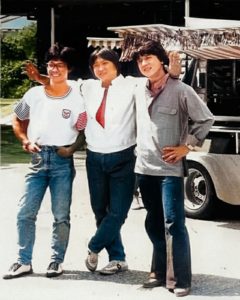



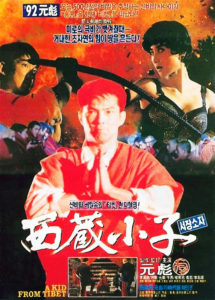
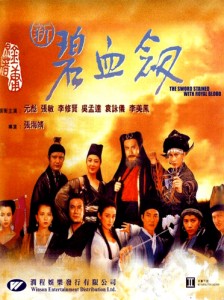
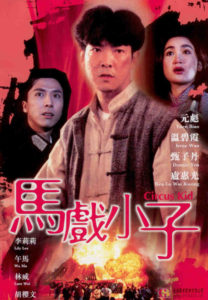
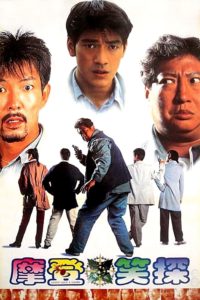
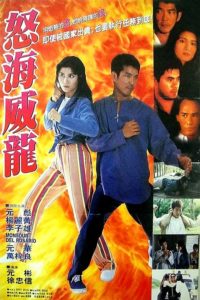

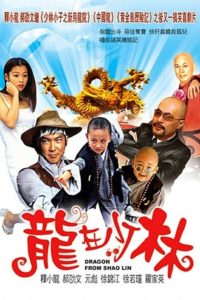
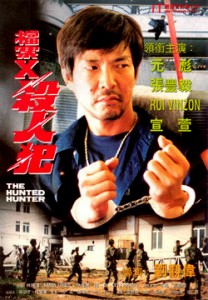



Great article! I agree with your top 5 . At first I thought Hero should be a slot or 2 higher. But “The Boxer From Shantung” was such a memorable classic. After recently watching both films again thanks to 88Films & Shawscope Vol. 1 releases I think your correct. Hero is a good film and Biao steals the show but it lacks the intensity of the original especially the finale. I think it attempted to add comedy, that worked and was definitely a sign of the times, but damn the original had the feeling of a lit fuse that lead to that explosive finale I wish Hero could have replicated. But as you can tell I’m a huge fan of the 3 Dragons so thanks for such an in depth article!
your articles rock Paul! Unlike Jackie and Samo, Yuen is lacking in the charisma department. His acrobatic skills and Kung-Fu skills are second to none, but there’s a reason his career didn’t flourish!!!! Doubt we’ll ever see some of these films get proper releases. Will 88, Eureka, Vinegar or these others guys have the balls to release Don’t Give A Damn…. will the righteous Mike and Arnie say no to the commentary based on their perfect morals? Or is Bey Logan worse than “black face”? Thank god the commentary is an option. Nobody listens to their boring crap.
LOL seriously Mike and Arnies commentaries on all these remasters are terrible. Logan got cancelled quite rightly but his commentaries were excellent
Or is Bey Logan worse than “black face”?
Yes.
Excellent read, thanks for posting. Always enjoyed Yuen’s work, even the lesser considered titles. I’m glad that along with Chan & Hung’s titles that he’s included in the recent blu ray remaster resurgence, and I really hope the likes of Don’t Give & Kid from Tibet etc make it too.
Dude, I always enjoy your reviews, overviews, and article topics. This one has to be my favorite of the year!!! Biao essentially averages an equal number of hits and misses in his filmography. He is so much fun to watch in action. The 90’s are an era in which he should have dominated on a par close to Chan’s. It’s a shame he didn’t. There’s great stuff to be had, but man! There could’ve been a few more standout films.
Fantastic read! I always like seeing several mini reviews in one article, and I’m curious to track down some of the titles mentioned like Tough Beauty and Sloppy Slop!
I have to include Shanghai Shanghai as one of my favorite Biao flicks from the 90’s since it was a fun Indiana Jones styled romp with a variety of entertainment it certainly got the formula better than Circus Kids.
I’d like to believe that most of these flicks would get picked up for 88 films and Vinegar Syndrome except for the likes of Saga of the Phoenix and Don’t Give a Damn. 88’s release of Hero was great stuff!.
Wow. Now that’s an article!
Always have a huge soft spot for Yuen. For me he was the most gracious, with Jet Li. Like a…dancer, a gymnast, I don’t know.
Maybe he wasn’t ambitious enough…
Maybe he wasn’t “funny” looking enough without even playing, like Jackie and Sammo…
Maybe he sould have got his teeth fixed (I’m not kidding…and I’m certainly not laughing at him).
Maybe nobody realised at the time how great he was in On the run (and how awesome that movie is)…
Yuen Wah is not as well known as Yuen Biao, but he too should have had a “bigger” carreer.
But I love them anyway.
He was the most gracious, maybe with Jet Li. Like a dancer, a gymnast…
Probably not ambitious enough…
I wouldn’t talk charisma, but he wasn’t “funny” without even playing like Jackie and his big nose, or Sammo and his “false” big belly…
Maybe nobody realised at that time how GREAT he was in On the run (neither Jackie nor Sammo have ever been as good as him in a “dramatic” role, even if they had their very good moments)…and how splendid this movie is…
I also think about Yuen Wah when evoking Yuen Biao. Incredibely brilliant, but…something was lacking…or came too late (he’s genius in Kung fu hustle).
Well, I’m up there and I like ’em. A lot.
Really sorry about the almost repost.